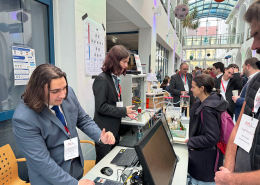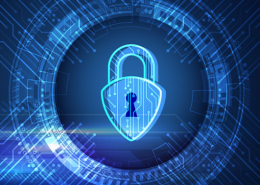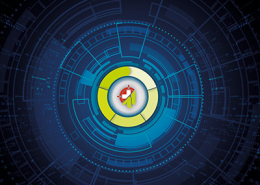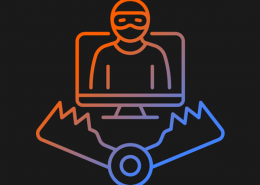 https://www.ikarussecurity.com/wp-content/uploads/2025/03/IMG_2888-1200.jpg
900
1200
IKARUS
https://www.ikarussecurity.com/wp-content/uploads/2025/02/IKARUS-Security-Software-4-1.png
IKARUS2025-03-27 13:29:322025-03-27 13:29:33IKARUS Supports HTL Project FENRIR as Partner and Sponsor
https://www.ikarussecurity.com/wp-content/uploads/2025/03/IMG_2888-1200.jpg
900
1200
IKARUS
https://www.ikarussecurity.com/wp-content/uploads/2025/02/IKARUS-Security-Software-4-1.png
IKARUS2025-03-27 13:29:322025-03-27 13:29:33IKARUS Supports HTL Project FENRIR as Partner and SponsorRed and blue teams complement technological security approaches by adding human intelligence and strategic thinking. They continuously provide practical information to eliminate vulnerabilities and improve the existing security architecture.
Companies can train internal teams for implementation or use external service providers who specialise in Red/Blue exercises.
What are Red Teams?
Red teams consist of experts who think and act like hackers to identify vulnerabilities. Their aim is to test a system’s defences before real attacks take place. They use real-world attack techniques ranging from phishing and social engineering to sophisticated penetration tests and exploits.
The key objective is to identify and highlight organisational and technical security weaknesses. On completion of a test, the Red Team provides a detailed analysis of the vulnerabilities found and recommendations for remediation.
Red teams are made up of penetration testers, security analysts or ethical hackers with in-depth knowledge of attack strategies. They require creativity and knowledge of current threats such as zero-day exploits.
Red Teams – the “attackers”
Goals:
- Identifying vulnerabilities
- Testing the security measures
- Improvement of defense strategies
Examples:
- Phishing simulations
- Penetration tests
- Social engineering attacks
What are Blue Teams?
Blue Teams are responsible for defending networks, systems and data. They monitor, analyse and respond to security incidents. They use tools such as security information and event management (SIEM), intrusion detection systems (IDS), endpoint detection and response (EDR), network monitoring and anti-malware solutions.
The Blue Team’s role is to respond effectively to detected attacks, contain them, remediate and recover systems. Learning from attacks and incidents is a key component. Blue Teams investigate in detail how the attack took place, which vulnerabilities were exploited and optimise their defence strategies based on these findings.
Blue teams are made up of IT security professionals with experience in incident response, monitoring and vulnerability management. They require expertise in security protocols, system monitoring and threat analysis.
Blue Teams – the “defenders”
Goals:
- Threat detection and defense
- Improvement of security policies
- Reaction to security incidents
Examples:
- SIEM systems
- Intrusion detection systems (IDS)
- Endpoint security software
Purple Teaming: the collaboration between Red and Blue Teams
Although red and blue Teams traditionally work against each other, practice shows that close collaboration – often referred to as Purple Teaming – significantly increases an organisation’s level of security. Regular dialogue between red and blue teams enables defenders to learn directly from attackers’ findings. As a result, security improvements are implemented more quickly, and threats are identified earlier.
Purple Teaming involves joint security exercises where red and blue teams work together to identify and remediate vulnerabilities in real time. This provides an immediate feedback loop and improves responsiveness and adaptability. Purple Teaming fosters a culture of continuous learning and leads to greater security awareness throughout the organisation.
Purple Teaming – the bridge between attack and defense
Goals:
- Maximum effectiveness
- Knowledge exchange between teams
- Dynamic defense strategies
Advantages:
- Efficient communication
- Holistic view
- Faster elimination of weak points
Red and blue team test procedure
The integration and testing of a red and blue team system in an organisation requires careful preparation and certain prerequisites to achieve effective results. In addition to the right organisational framework, an appropriate IT infrastructure with effective attack and defence tools and an isolated test environment is required.
Before testing begins, the attack surface and rules of engagement must be defined to prevent real data from being destroyed or systems from being compromised. Legal and regulatory requirements must also be considered.
After preparation, the red team starts with simulated attacks and the blue team with defence and response measures. All activities are documented and analysed after the test phase. Vulnerabilities and response times are assessed, security gaps are closed, and security measures are adjusted. Follow-up tests are used to verify that the measures have been successfully implemented and that the vulnerabilities have been eliminated.
Implementing Red and Blue Teams
To maximise the benefits of red and blue Teams, companies should consider a number of practical measures:
- Carry out regular exercises: Simulated attacks and defences should be run regularly to test and improve response capabilities. This can take the form of penetration tests, red team exercises or full purple team simulations.
- Use real-world scenarios: The MITRE ATT&CK Framework is a valuable tool that helps both red and blue teams understand and apply real-world attack techniques. It provides a systematic method for threat detection, defence, and analysis.
- Continuous training and development: Ongoing training is critical to ensure that both Red and Blue teams are aware of the latest attack techniques and defences and can make the best use of tools and instruments.
Conclusion: Human intelligence and creativity complement technology and AI
Red and blue teams complement technical security measures by ensuring that they are not only implemented correctly, but also used effectively. Their work allows vulnerabilities to be identified early and addressed before they can be exploited by attackers. The human element remains essential as cybercriminals continue to evolve their strategies and organisations need to be agile in responding to new attack patterns.
Collaboration between red and blue teams, particularly through purple teaming, promotes continuous improvement of security strategies.
- Organisations are better prepared for real attacks.
- The ability to respond to new threats is enhanced.
- Increased resilience to future challenges.
Artificial intelligence (AI) is playing an increasingly important role by simulating attacks more realistically, identifying threats faster and adapting defence strategies flexibly. It is becoming an important tool for dealing with the increasing complexity and dynamics of cyber threats, complementing human intelligence and creativity to find strategic and innovative solutions with analytical precision and speed.

















